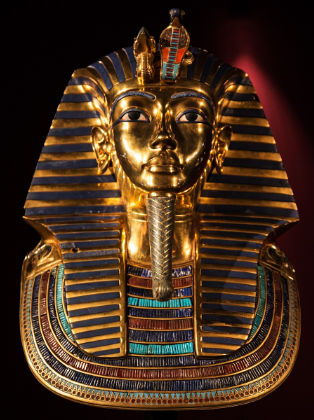
Gold is a precious metal that has become an inherent part of every human culture on Earth. Its value and prestige do not have any geographical limits, and no human on this Earth is not aware of the beauty, luster, and irreplaceable nature of gold. This incredible status of gold in human history is worth looking at and understanding to realize the actual value of this asset. Human history is littered with references to gold and its power, and the precious metal has become a metaphor. If ever you look to sell your gold jewelry, all you need to do is peek into the history of gold to see its actual value.
In this blog, we will take a journey through history to explore the fascinating story of gold, from its early discovery and uses to its status as a precious metal today.
Ancient Origins and Early Uses
Gold is not necessarily geologically restricted to any particular part of the world, therefore, cultures all over discovered gold and used it for different purposes. While their uses for the precious metal might differ from each other, the incredible status of gold as valuable and powerful remained the same in every culture. Gold was also one of the first metals that could be worked with due to its malleable nature and the fact that it occurred in shapes such as nuggets or flakes. This made it highly valuable. Here are some of the origins and uses of gold in ancient civilizations:
1. Early Discoveries
The first traces of gold can be traced back to ancient civilizations in Mesopotamia and Egypt around 3000 BCE. These early civilizations recognized gold’s beauty and rarity, using it primarily for decorative purposes and jewelry.
2. Ancient Egypt’s Relationship with Gold
It would be wrong to credit the discovery of gold with one particular civilization since there is no historical consensus on it; however, there is a ton of evidence for ancient Egyptians using gold for all purposes, especially in the luxurious lifestyles of the pharaohs. Gold held immense significance in Ancient Egypt, symbolizing the sun god Ra and the pharaoh’s divine power. The Egyptians crafted intricate jewelry, burial masks, and other ornate artifacts with gold, believing it to have protective and spiritual properties.
3. Gold as Currency
As civilizations evolved economically, there was a need for a currency that could be traded for goods and services. Gold, due to its inherent value, was used as currency. In Lydia (modern-day Turkey), around 600 BCE, the first gold coins were minted, establishing gold’s role as currency. This practice spread throughout the ancient world, from Greece to Persia and Rome.
4. Gold in Ancient Greece
Ancient Greece is one of the greatest ancient civilizations responsible for shaping the modern world. The Greeks viewed gold as a representation of the gods and the pursuit of perfection. The city of Delphi featured a massive gold statue of Apollo, while Greek temples and treasuries were adorned with gold artwork and offerings.
5. The Gold Rushes
Throughout history, gold discoveries have triggered mass migrations and transformative events. The California Gold Rush in the mid-19th century and subsequent gold rushes in Australia and South Africa sparked frenzies as people sought their fortunes, leaving indelible marks on these regions.
Gold in Modern International Trade
With time, economies became more complex, and gold became a store of value in modern nation-states. Here are the major events that shaped gold’s value in modern international trade:
1. The Gold Standard
In the late 19th and early 20th centuries, many countries adopted the gold standard, tying their currencies to a fixed amount of gold. This system provided stability in international trade and financial transactions, although it eventually became impractical due to the limited supply of gold.
2. Gold as a Source of Crisis Aversion
While the gold standard was abandoned in the 20th century, gold remained important in international trade due to its stability. Central banks still hold significant gold reserves in case of any major crises, and gold plays a role in balancing trade deficits and acting as a hedge against inflation and currency fluctuations.
3. The Rise of Gold Markets
With the advent of modern financial markets, gold became a tradable asset. Gold markets, including futures exchanges and over-the-counter trading, emerged, allowing investors to speculate on gold prices and hedge against market risks. Even usable gold assets, such as gold jewelry, are part of this gold market, and people sell gold jewelry for significant financing.
4. Gold as a Safe Haven
In times of economic uncertainty or market volatility in the modern era, gold has consistently served as a safe haven asset. Investors turn to gold as a hedge against inflation, currency devaluation, and geopolitical risks. During the global financial crisis of 2008, gold prices soared as investors sought refuge from the turmoil in traditional financial markets.
Final Thoughts
The history of gold is multifaceted and long; therefore, summarizing it in an abridged version doesn’t necessarily do its illustrious past justice. However, the transformation of gold from a highly revered symbol of wealth to a practical tradeable asset is quite evident. Nowadays, gold is still used for decorative and practical purposes, but its inherent value means it always remains a tradeable asset. Many people buy and sell gold jewelry for investment purposes these days.
If you are looking to sell your gold jewelry, the process is now easier than ever before. Online gold buyers like Gold to Cash help you convert your gold to cash in 3 simple steps. Whether you want to sell gold rings or gold necklaces, all you need to do is order a free appraisal kit and convert gold to cash. We ensure completely safe transactions and the best market value you will get for your gold assets. Contact us now to find out how the best return on your gold assets.